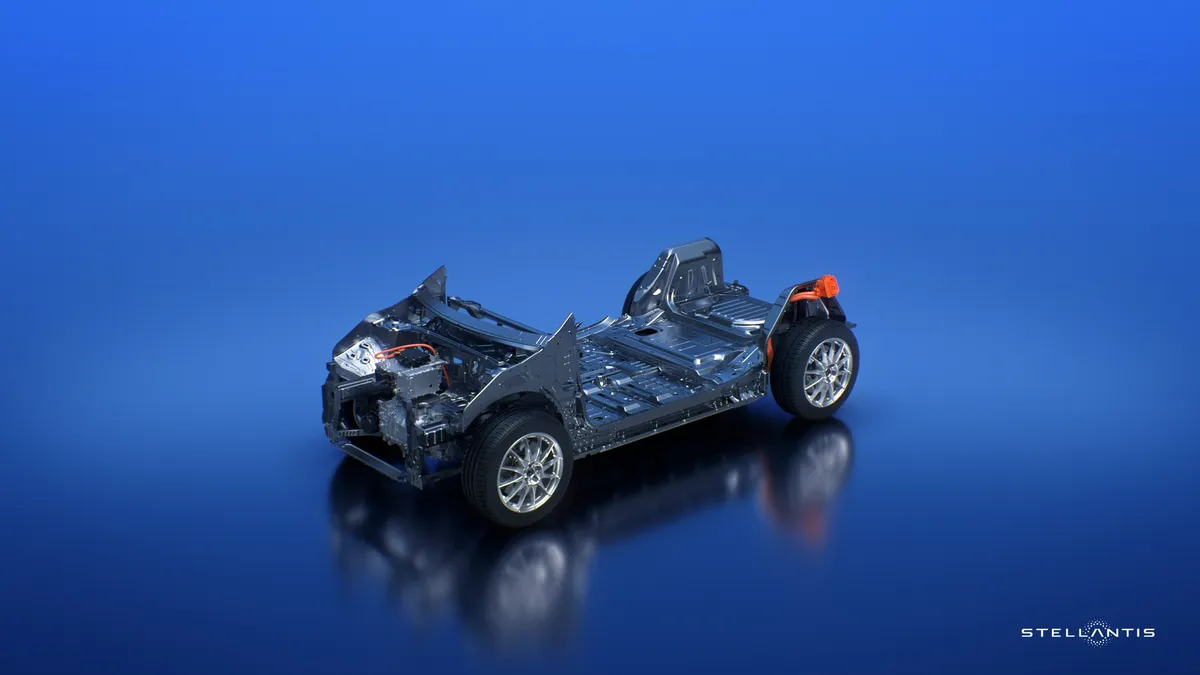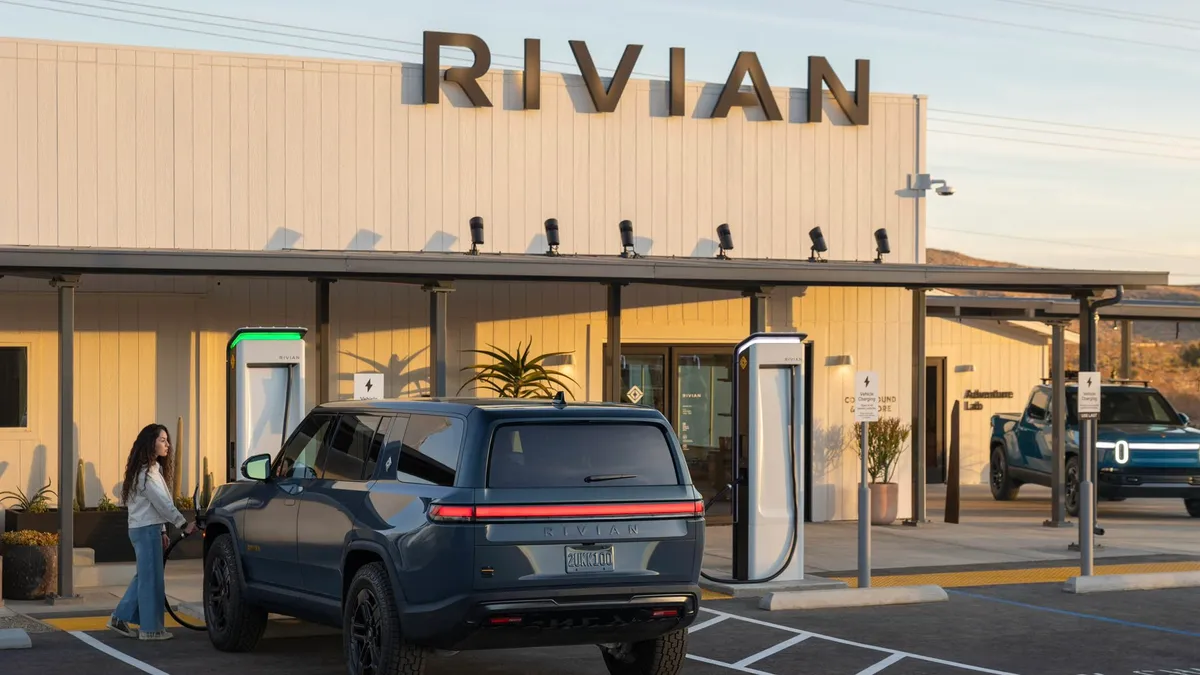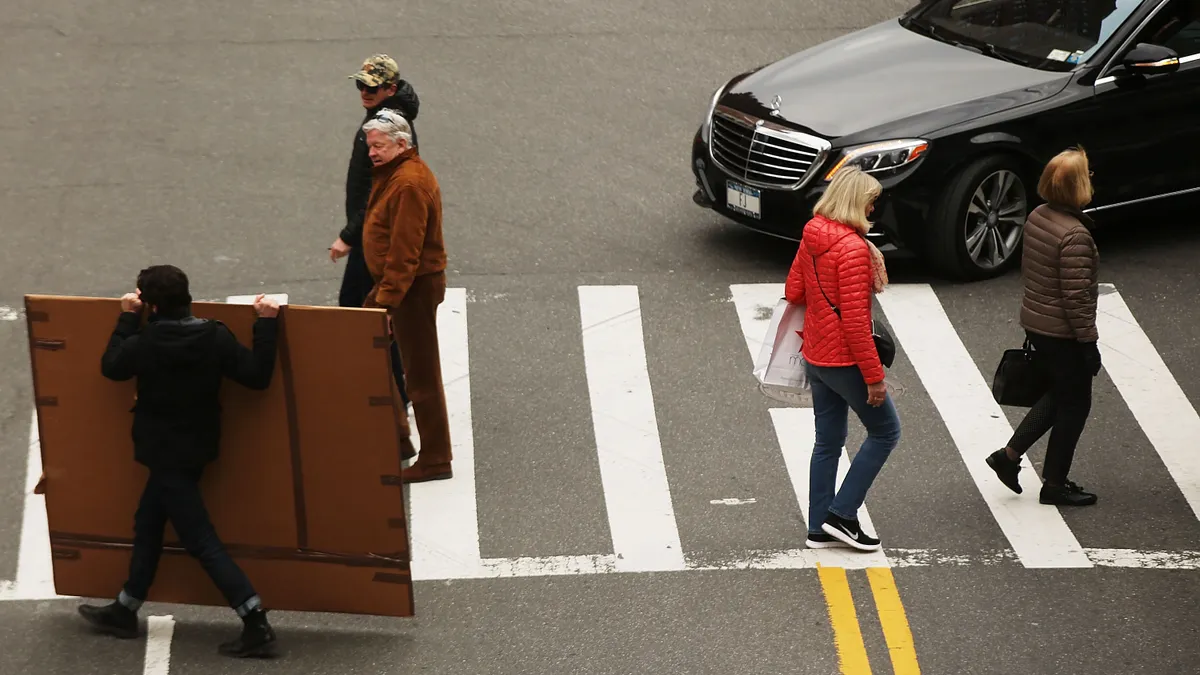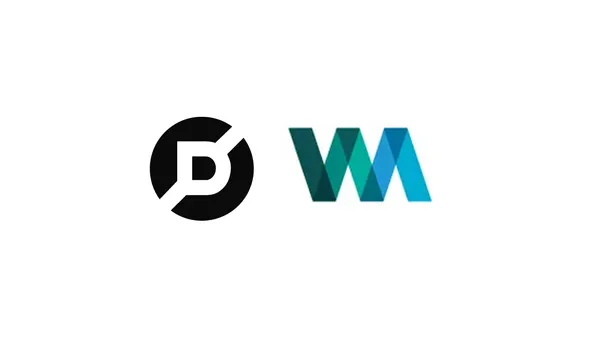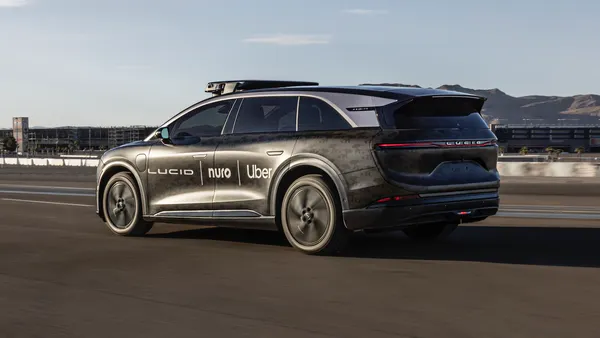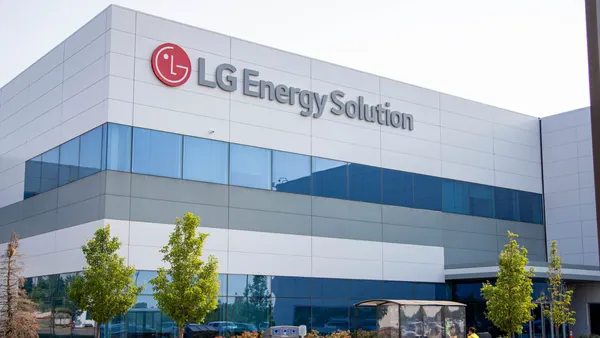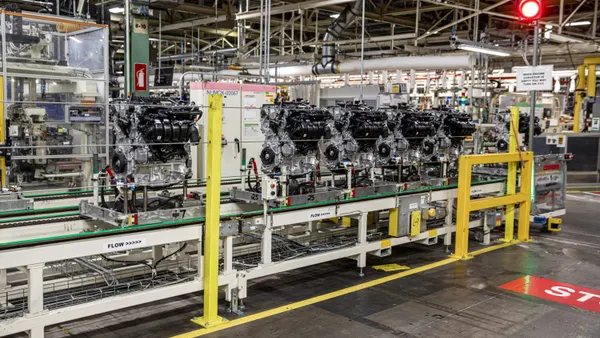Dive Brief:
- Stellantis unveiled its STLA Medium electric vehicle platform after over two years of development, according to a press release Wednesday.
- It will be the foundation for up to 2 million battery-powered vehicles built annually at multiple global assembly plants. Production will begin first in Europe.
- The introduction of the STLA Medium platform will help support the company’s initiative to reduce its carbon footprint and have 100% of European sales be battery-electric vehicles and 50% of U.S. sales by 2030.
Dive Insight:
Stellantis engineered the platform to support popular crossover and SUV vehicle segments, which accounted for roughly half of the world's passenger vehicle sales in 2022. Stellantis joins General Motors, Volkswagen and others in developing dedicated EV platforms to support a variety of vehicle configurations and body types to reduce production costs and improve scalability.
The platform’s flexible design will support front-wheel-drive or all-wheel-drive vehicle configurations with driving ranges between 310 and 435 miles.
It’s equipped with a 400-volt electrical architecture for improved energy efficiency and quicker charging times, according to Stellantis. All of the platform’s components, including the heating and cooling system, steering, braking and propulsion systems, are designed to minimize energy consumption and help improve overall efficiency, which helps conserve battery power to extend driving range, Stellantis said.
The STLA Medium platform is also modular, allowing multiple EVs to share components to reduce production costs.
The platform consists of a flat, single-stacked battery pack, which helps create a lower center of gravity for improved handling and frees up space for larger passenger compartments, the company said. Stellantis will standardize the dimensions of the battery pack and its integrated cooling system across all vehicle configurations.
The battery will offer up to 98 kWh of usable power, with output ranging from 160 to 285 kW, depending on the vehicle’s powertrain setup. The 400-volt system allows customers to charge the vehicle’s battery from 20% to 80% in 27 minutes.
The STLA Medium platform will also support new battery chemistries like nickel, cobalt-free and solid-state batteries. The additional flexibility could allow the automaker to mix and match batteries to balance vehicle cost and performance. In May, Stellantis announced that it’s exploring all available battery technologies for its future EVs, including solid-state and lithium-sulfur batteries.
Stellantis targets global BEV sales of 5 million units by 2030, which includes 75 BEVs across its brands, which include Fiat, Jeep, Chrysler, Peugeot, Dodge, Ram and Alfa Romeo.



